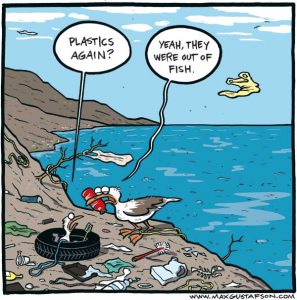 So very exciting! Yesterday we woke up to a thin blanket of snow covering our street, and it was still snowing. As for accumulation, official estimates have been between 2 and 5 centimeters (5 cm is about 2 inches). We live on the outskirts of town, and we definitely got 5 cm, perhaps a bit more.
So very exciting! Yesterday we woke up to a thin blanket of snow covering our street, and it was still snowing. As for accumulation, official estimates have been between 2 and 5 centimeters (5 cm is about 2 inches). We live on the outskirts of town, and we definitely got 5 cm, perhaps a bit more.

Yes, a very small snowfall, but it was enough for all the schools in Florence to be closed. No, I’m not kidding. Based on the forecast, on Wednesday the municipality announced that there would be no school on Thursday. Why? Well, simply put, because Florence doesn’t do well in snow, not even a few inches.
We’re simply not equipped for it.
Our last snowstorm occurred in December of 2010…although, unlike yesterday’s snowfall, that was a BIG one (well, for Florence, anyway). In 2010, we got more than 10 inches of snow (I wrote a post about it, in fact, and posted a few photos of our snow-covered neighborhood…).
The city was completely paralyzed back then…I remember barely making it home from work, and Stefano got home only after 1 AM, after nearly getting stranded near his office…It was a mess for most people, but for ME, it was COMPLETE JOY!!!
 Anyway, I know that those of you who live in places that get much bigger snowfalls will laugh at us (and, having lived in Boston, Toronto, Cape Cod, in a way I do, too), but that’s the way things are here. After all, it would be pointless and expensive to have a lot of snowplows rusting away inside warehouses, waiting for that one possibly-big snowfall we get every seven years or so…Right?
Anyway, I know that those of you who live in places that get much bigger snowfalls will laugh at us (and, having lived in Boston, Toronto, Cape Cod, in a way I do, too), but that’s the way things are here. After all, it would be pointless and expensive to have a lot of snowplows rusting away inside warehouses, waiting for that one possibly-big snowfall we get every seven years or so…Right?
Back to yesterday. After taking a few photos of our street and our garden, I really wanted to go up to Florence’s panoramic terrace overlooking the city, the Piazzale Michelangelo, to take some photos of the city…but it’s far from our house, too far to walk (based on the forecast, the snow was going to turn to rain at lunchtime…not enough time…). 
Stefano had to go to work (his SUV has winter tires, unlike my little Panda), so I begged him to take me up to the Piazzale. I reasoned with him that snow is such a rare event in Florence and that we just had to go to the Piazzale. He replied, “no, sorry, I really wish we could, but there just isn’t enough time. I have two shipments going out today and have to be at work ASAP.”
I understood, of course. But still, I was so disappointed! Oh well. I began getting myself and my camera ready for some neighborhood shots. Not the same thing, of course, but it would have to do…
 But then I saw that sneaky boy getting out his camera gear, his new lens in particular…
But then I saw that sneaky boy getting out his camera gear, his new lens in particular…
Haha, very funny indeed, Stefano!!! Yes, I married a comedian… 🙂
And so we reached a compromise: we’d stop at the Piazzale to take some photos on the way to his office, but then I’d be stuck at his office all day. Clearly, I was more than happy to be “stuck.”
So here are some of my photos. Sorry, they look fuzzy and dark because the snow was still coming down, and the light was terrible (for photos, anyway). I took some others with my cellphone, but for some reason they aren’t downloading onto the computer. These will have to do. 
In the end, we had tons of fun yesterday. One of Stefano’s colleagues had brought her daughter to work, so she and I went outside while the grownups were working 😉 …We chased each other around the snow-filled parking lot and had a fierce snowball fight. What a blast!!!
I know I’m in the minority, but I LOVE SNOW (in case that weren’t obvious…hehe). I know, I know, I would probably change my mind if I lived in a Northern European country and had to shovel a ton of snow every day every single winter, but since I do not, snow always gives me a sense of peace and beauty…the sort of feeling you get when you meditate. Although…that feeling is totally gone today…It’s been raining hard all morning, so the snow has all melted…oh well…
It was lovely while it lasted!!!


 When I first began blogging, in March of 2007, a more experienced blogger informed me that I had to publish a post every day in order for my blog to be visible on Google and not be deemed “inactive.” If I stopped writing and publishing, even for ONE day, he added, my blog be more difficult to find on the search engines, meaning that I’d lose my readership. He talked about blogging as though it were a competition.
When I first began blogging, in March of 2007, a more experienced blogger informed me that I had to publish a post every day in order for my blog to be visible on Google and not be deemed “inactive.” If I stopped writing and publishing, even for ONE day, he added, my blog be more difficult to find on the search engines, meaning that I’d lose my readership. He talked about blogging as though it were a competition.

 For some unknown reasonzzzzz,
For some unknown reasonzzzzz, 

 the snow was coming down and making it hard to see, and besides, I am no Steve McCurry…
the snow was coming down and making it hard to see, and besides, I am no Steve McCurry…  So very exciting! Yesterday we woke up to a thin blanket of snow covering our street, and it was still snowing. As for accumulation, official estimates have been between 2 and 5 centimeters (5 cm is about 2 inches). We live on the outskirts of town, and we definitely got 5 cm, perhaps a bit more.
So very exciting! Yesterday we woke up to a thin blanket of snow covering our street, and it was still snowing. As for accumulation, official estimates have been between 2 and 5 centimeters (5 cm is about 2 inches). We live on the outskirts of town, and we definitely got 5 cm, perhaps a bit more.
 Anyway, I know that those of you who live in places that get much bigger snowfalls will laugh at us (and, having lived in Boston, Toronto, Cape Cod, in a way I do, too), but that’s the way things are here. After all, it would be pointless and expensive to have a lot of snowplows rusting away inside warehouses, waiting for that one possibly-big snowfall we get every seven years or so…Right?
Anyway, I know that those of you who live in places that get much bigger snowfalls will laugh at us (and, having lived in Boston, Toronto, Cape Cod, in a way I do, too), but that’s the way things are here. After all, it would be pointless and expensive to have a lot of snowplows rusting away inside warehouses, waiting for that one possibly-big snowfall we get every seven years or so…Right?
 But then I saw that sneaky boy getting out his camera gear, his new lens in particular…
But then I saw that sneaky boy getting out his camera gear, his new lens in particular…